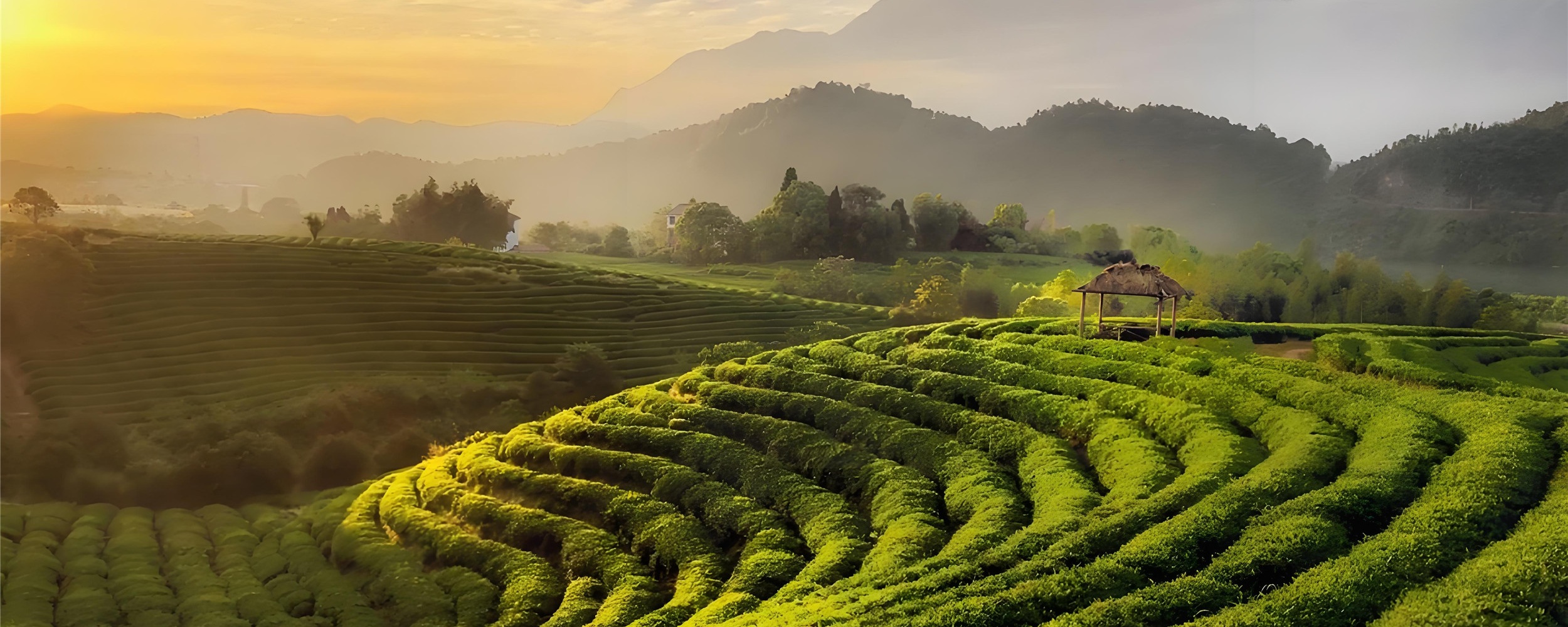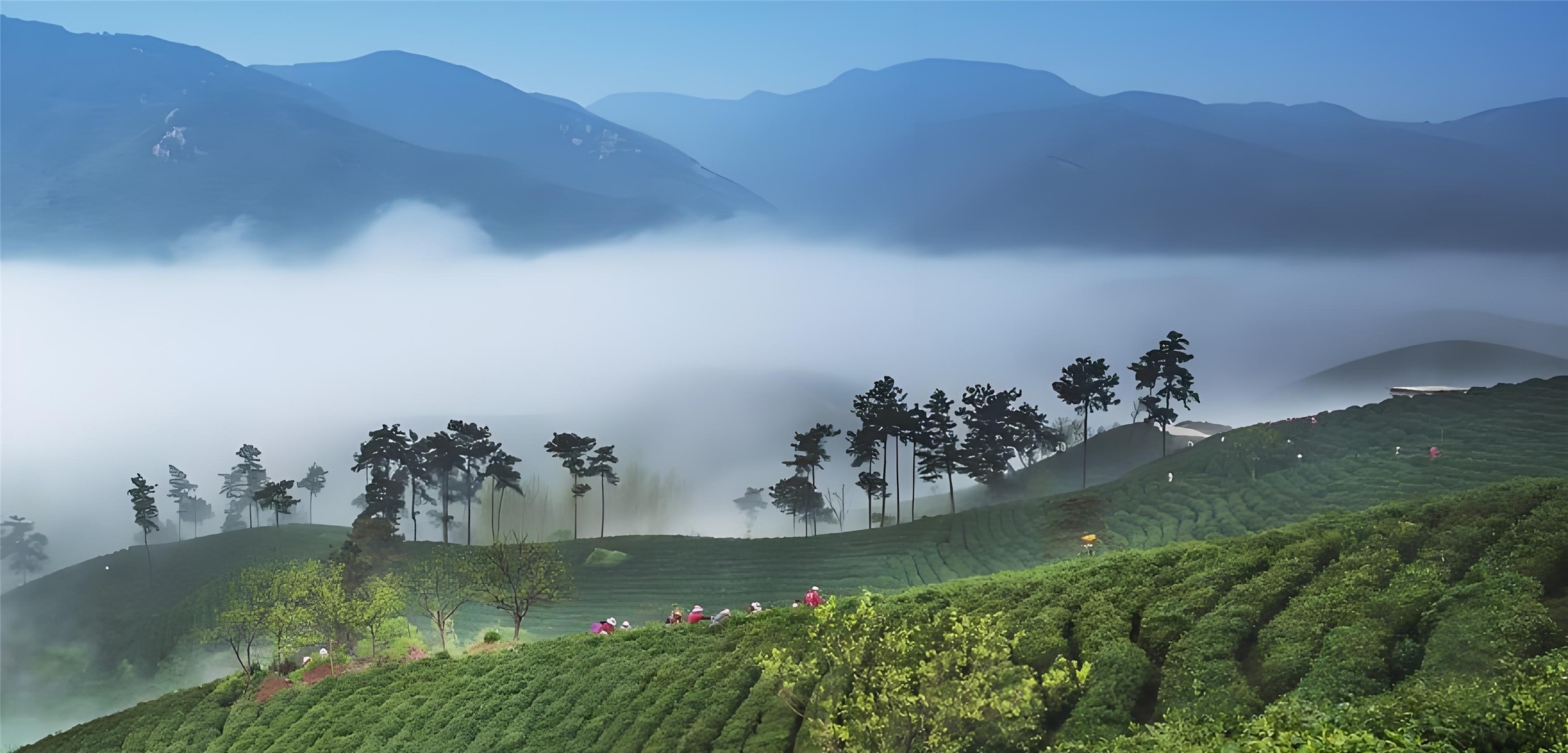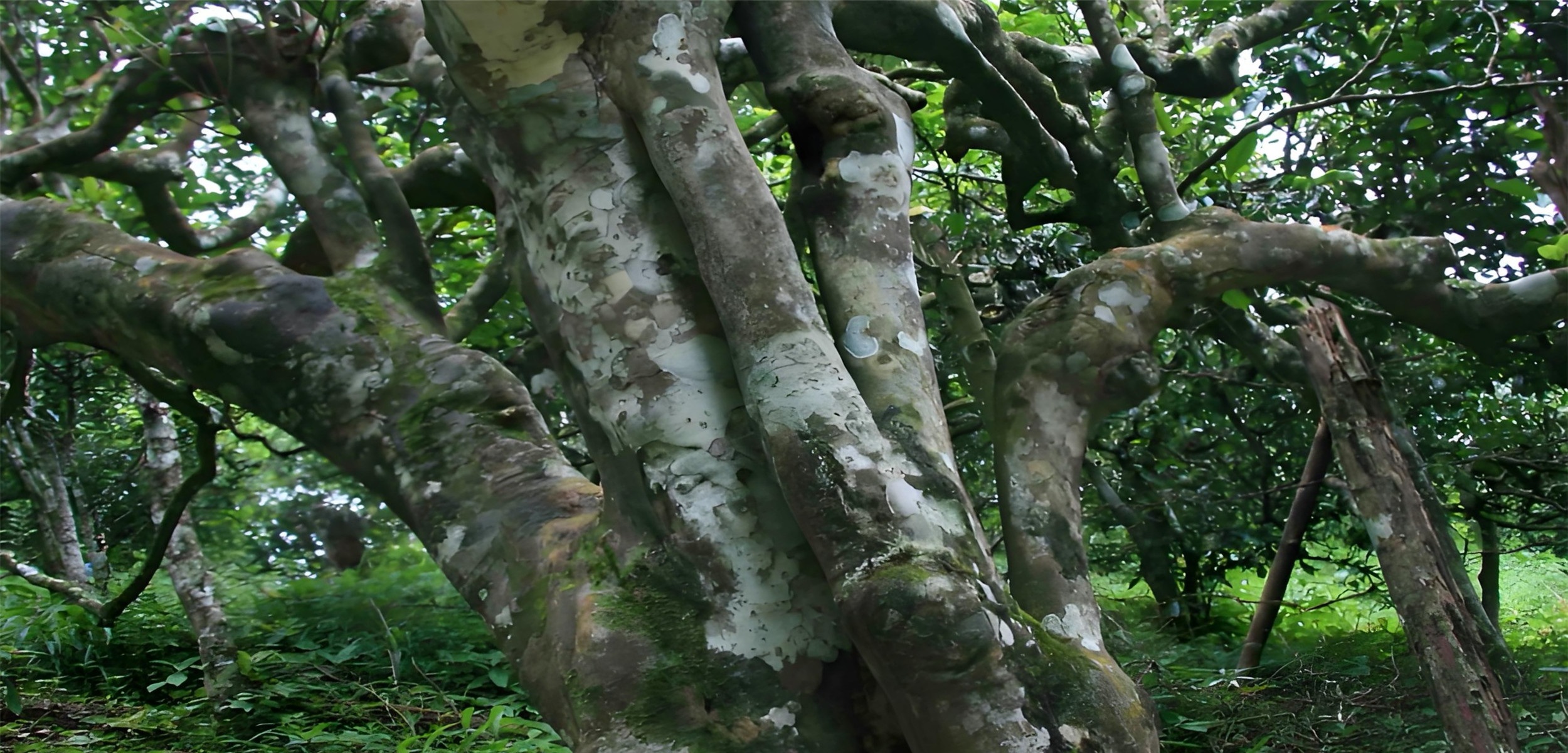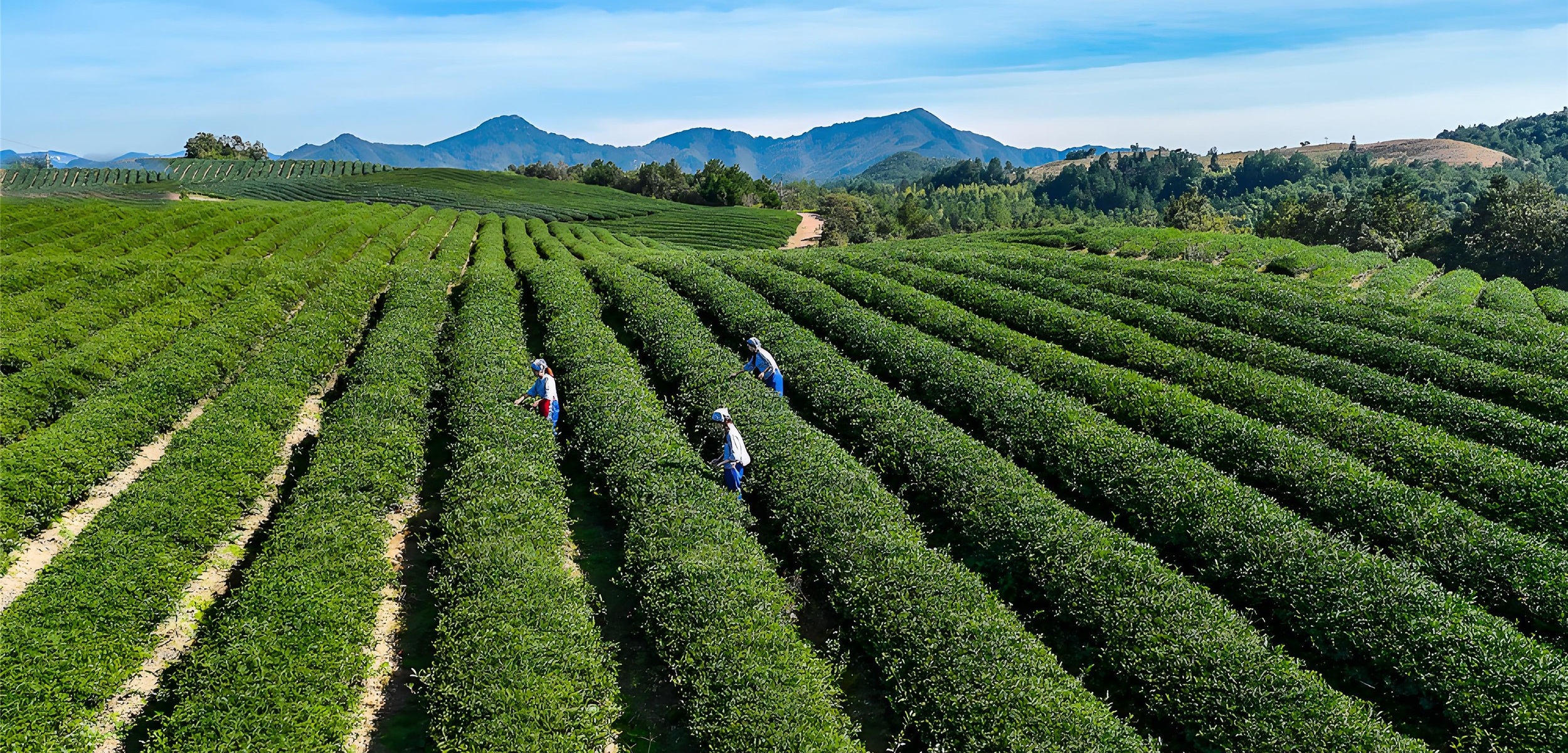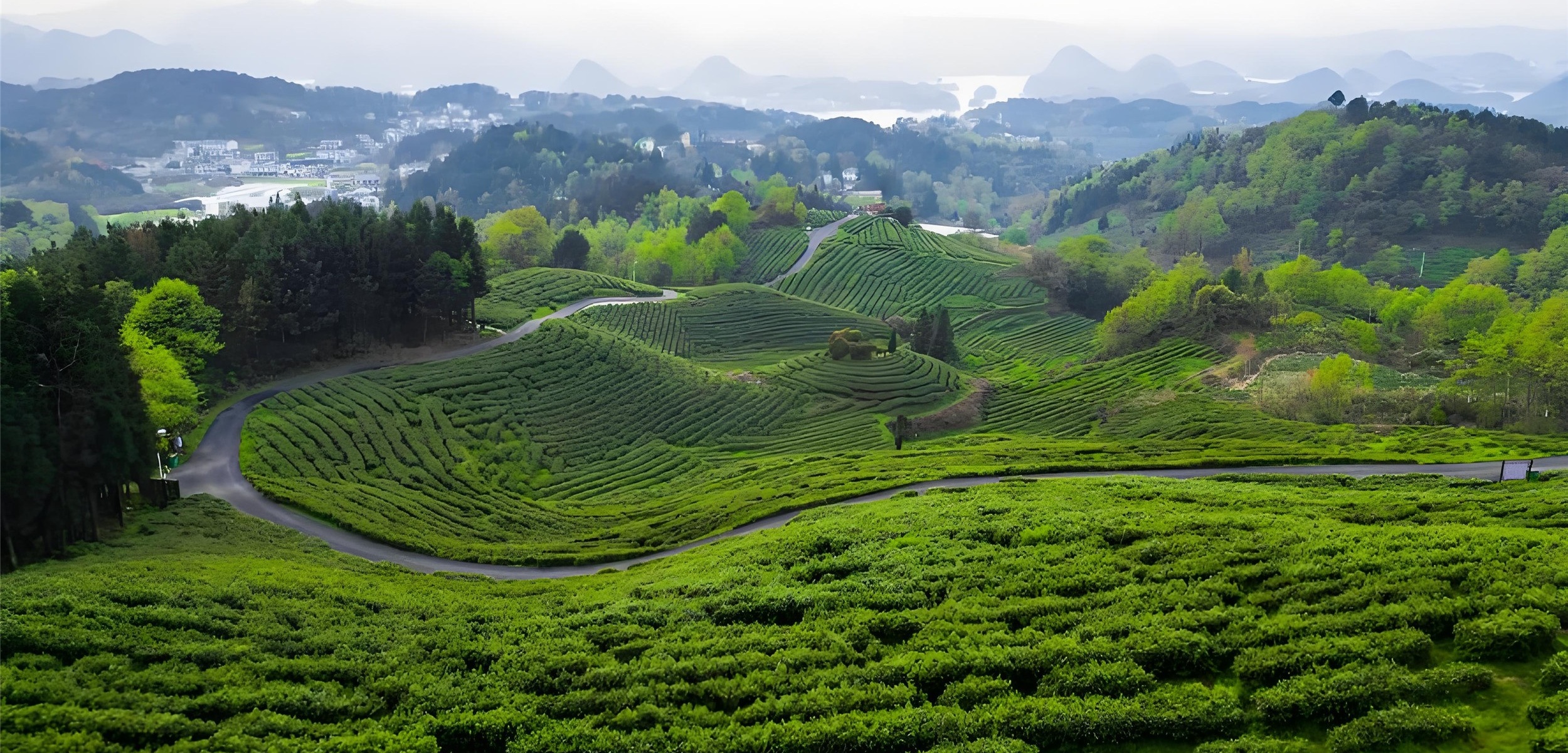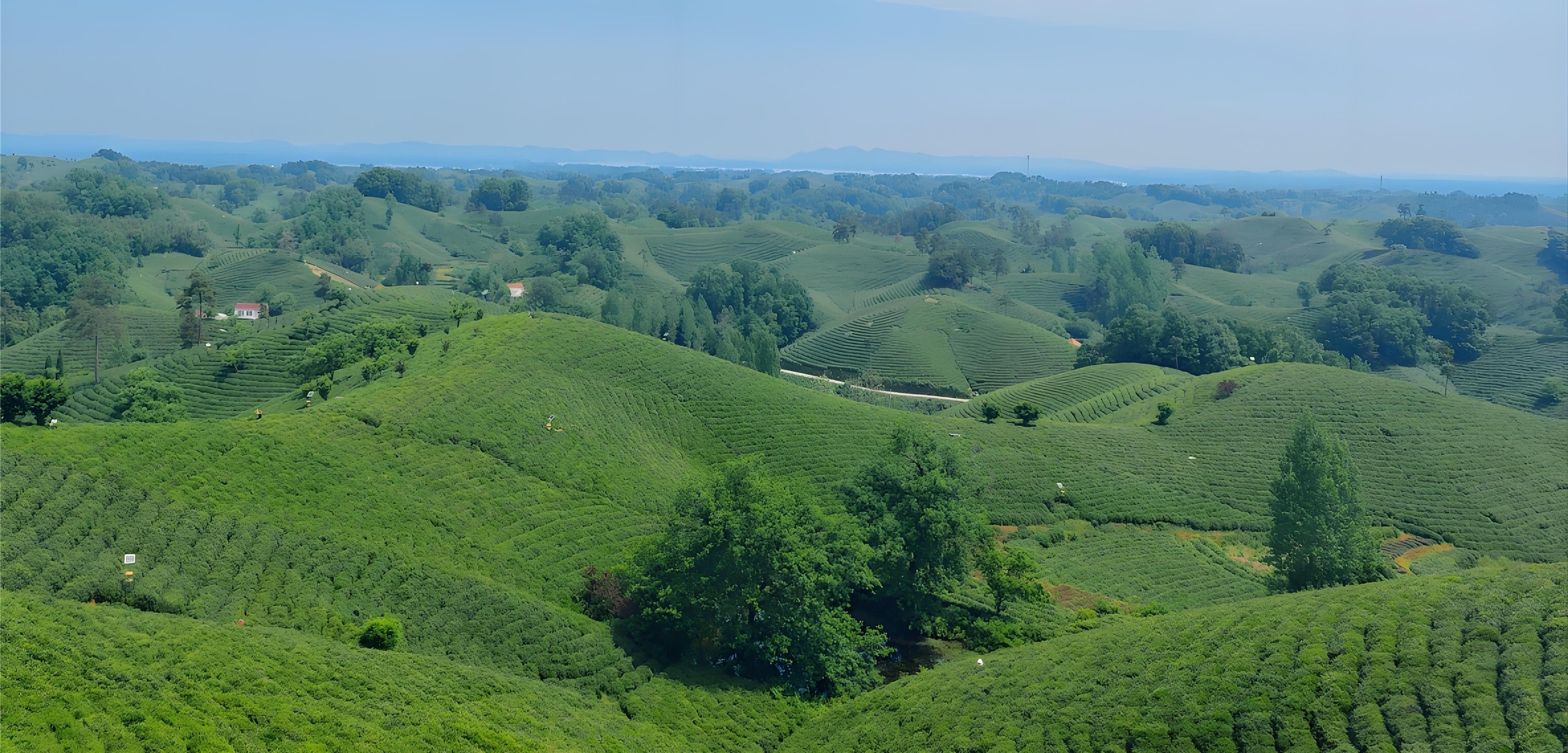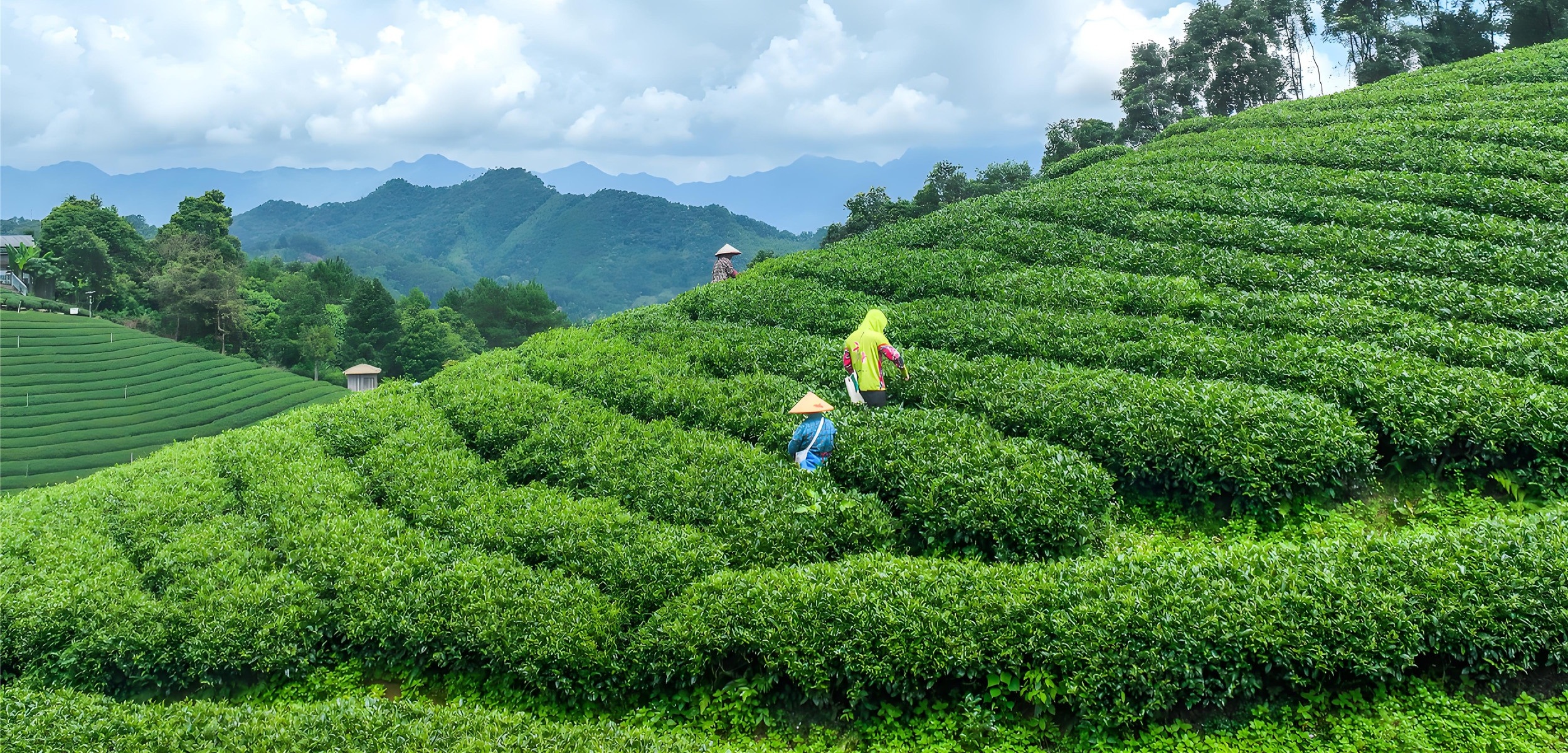大渡岗万亩茶园:云南普洱茶的原生态画卷 Dadugang Ten Thousand Acre Tea Plantation: The Original Ecological Picture of Yunnan Pu'er Tea
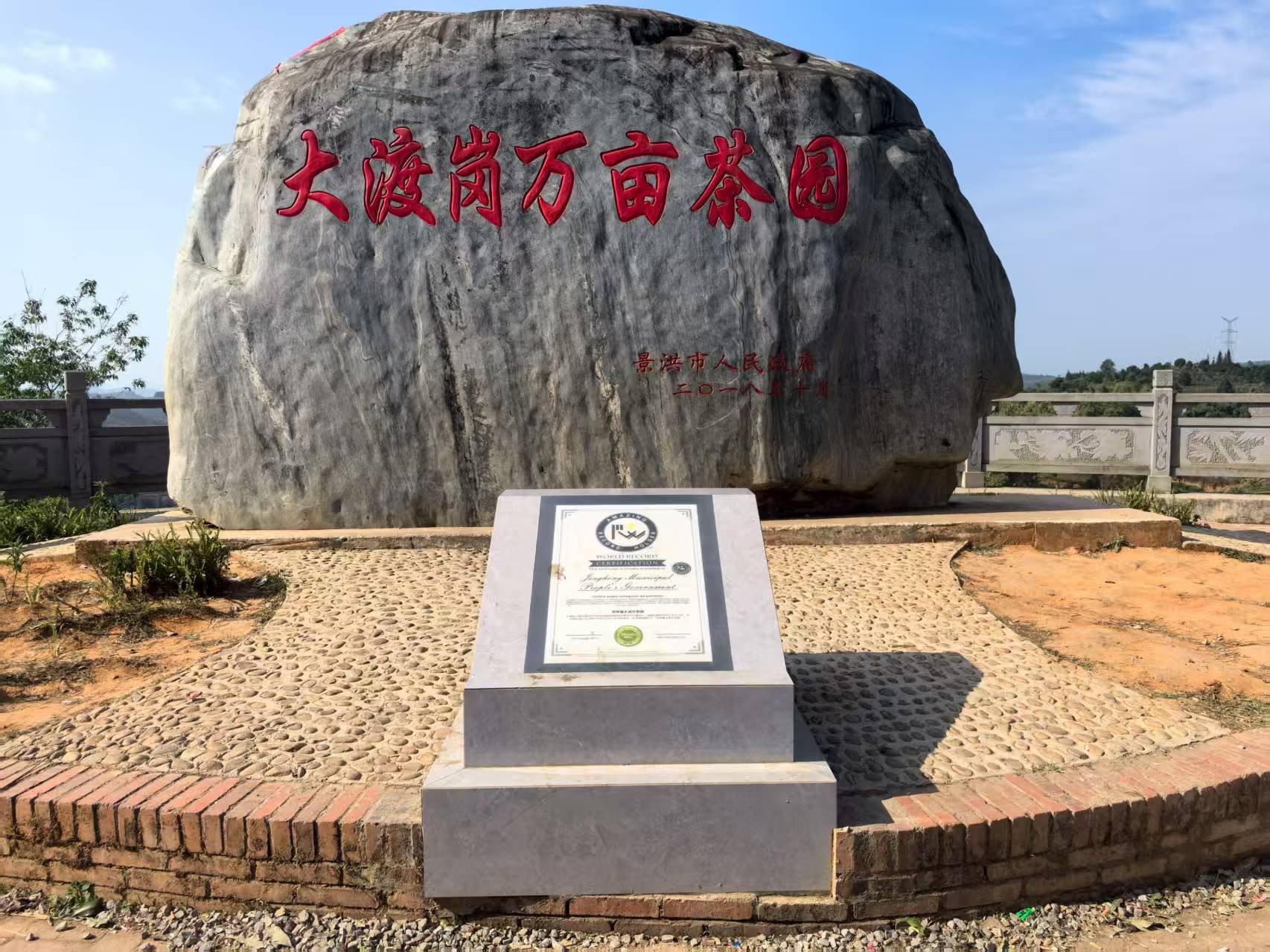
大渡岗万亩茶园:云南普洱茶的原生态画卷
一、茶园概况
大渡岗万亩茶园位于云南省西双版纳傣族自治州景洪市大渡岗乡,地处北纬21°-22°之间,海拔1200-1500米,是世界公认的优质茶叶生长黄金地带。这片总面积达6.3万亩的连片茶园,创造了"世界最大连片茶园"的吉尼斯世界纪录,是云南普洱茶的重要原产地之一。
二、地理环境优势
1. 气候条件
热带季风气候:年均气温18-20℃,年降水量1500-1800mm
昼夜温差大:有利于茶叶内含物质积累
云雾缭绕:年雾日达200天以上,形成天然"遮阳棚"
2. 土壤特性
红壤为主:pH值4.5-6.0,富含铁铝氧化物
有机质丰富:腐殖质层厚达20-30cm
矿物质多样:含硒、锌等微量元素
3. 生态体系
生物多样性:茶园与原始森林交错分布
无污染环境:方圆50公里无工业污染源
自然农法:采用"茶林共生"种植模式
三、茶树品种资源
1. 主要栽培品种
品种名称 特征 适制茶类
云南大叶种 叶大质厚,芽头肥壮 普洱茶、红茶
勐海大叶茶 茸毛多,持嫩性强 优质生普
凤庆大叶种 水浸出物含量高 滇红、熟普
2. 古茶树资源
百年以上古茶树:散布于茶园周边森林中
最大树龄:约300年(位于茶园西北角保护区内)
保护措施:实行"单株建档、专人管护"制度
四、茶叶生产体系
1. 种植管理
有机种植:90%以上茶园通过有机认证
立体栽培:上层乔木(樟树、桤木)+中层茶树+地表绿肥
生物防治:利用瓢虫、蜘蛛等天敌控制虫害
2. 采摘标准
等级 采摘标准 适制产品
特级 一芽一叶初展 高端普洱生茶
一级 一芽二叶 常规生普
二级 一芽三叶 熟普原料
3. 加工工艺
传统生普制作流程:
鲜叶摊晾→杀青→揉捻→日光干燥→蒸压成型→自然陈化
现代熟普发酵技术:
潮水→堆渥→翻堆→干燥→筛分→拼配
五、特色产品系列
1. 标杆产品
大渡岗早春银毫:明前单芽,年产量不足500kg
云雾古树饼茶:选用百年古树原料
有机熟茶砖:欧盟有机认证产品
2. 创新产品
茶花饼:茶叶与山茶花拼配
小青柑普洱茶:新会柑皮包裹熟普
茶膏:低温萃取浓缩制品
六、茶旅融合项目
1. 观光体验
茶山观光栈道:全长8.6公里的环形木栈道
采茶体验区:提供传统采茶工具和服饰
制茶工坊:展示非遗制茶技艺
2. 文化展示
普洱茶博物馆:收藏历代茶具2000余件
民族茶艺表演:哈尼族、傣族传统茶俗展示
茶马古道实景:复原古代马帮运茶场景
3. 特色服务
茶山民宿:10家特色茶主题民宿
定制茶席:专业茶艺师一对一服务
仓储托管:提供专业普洱茶陈化服务
七、产业效益与社会贡献
1. 经济数据(2024年)
年产量:生茶1200吨,熟茶800吨
综合产值:3.8亿元人民币
出口创汇:600万美元(主要销往东南亚、欧盟)
2. 社会效益
带动就业:直接从业人员3200人
扶贫成果:帮助周边6个少数民族村寨脱贫
科技推广:建立茶农培训学校,年培训2000人次
八、可持续发展实践
1. 生态补偿机制:每亩茶园提取50元生态基金
2. 碳汇交易试点:茶园碳汇量年交易额达120万元
3. 水资源保护:建设雨水收集系统,实现灌溉零取水
4. 废弃物利用:茶渣制作有机肥,利用率达95%
结语
大渡岗万亩茶园不仅是云南普洱茶产业的标杆,更是中国茶业可持续发展的典范。这里出产的每一片茶叶,都凝聚着北回归线上阳光雨露的精华,承载着少数民族的智慧传承。随着"一带一路"倡议的推进,这片绿色茶园正将普洱茶的陈香韵味传向世界各地,续写着茶马古道的新篇章。
Dadugang Ten Thousand Acre Tea Plantation: The Original Ecological Picture of Yunnan Pu'er Tea
1、 Overview of Tea Plantations
The Dadugang Tea Plantation, covering an area of 10000 acres, is located in Dadugang Township, Jinghong City, Xishuangbanna Dai Autonomous Prefecture, Yunnan Province. It is situated between 21 ° -22 ° N latitude and an altitude of 1200-1500 meters. It is widely recognized as a golden zone for high-quality tea growth worldwide. This contiguous tea garden with a total area of 63000 acres has created the Guinness World Record for the "world's largest contiguous tea garden" and is one of the important origins of Yunnan Pu'er tea.
2、 Geographical advantage
1. Climate conditions
Tropical monsoon climate: average annual temperature of 18-20 ℃, annual precipitation of 1500-1800mm
Large temperature difference between day and night: conducive to the accumulation of substances in tea leaves
Cloudy and misty: For over 200 days of annual fog, a natural "sunshade" is formed
2. Soil characteristics
Mainly red soil: pH 4.5-6.0, rich in iron and aluminum oxides
Rich in organic matter: the humus layer is 20-30cm thick
Mineral diversity: containing trace elements such as selenium and zinc
3. Ecosystem
Biodiversity: Interdistribution of Tea Plantations and Primitive Forests
Non polluting environment: no industrial pollution sources within a radius of 50 kilometers
Natural farming method: adopting the "tea forest symbiosis" planting mode
3、 Tea tree variety resources
1. Main cultivated varieties
Variety name, characteristics, and suitability for tea production
Yunnan large leaf seeds have large and thick leaves, plump buds, and Pu erh tea and black tea
Menghai large leaf tea has abundant fuzz, strong tenderness, and high-quality raw tea
The water extract content of Fengqing large leaf seeds is high, including Dianhong and ripe Pu
2. Ancient tea tree resources
Tea trees over a hundred years old: scattered in the forests around tea gardens
Maximum tree age: about 300 years (located in the northwest corner of the tea garden conservation area)
Protection measures: Implement the system of "single plant filing and dedicated management"
4、 Tea production system
1. Planting management
Organic planting: Over 90% of tea gardens have passed organic certification
Three dimensional cultivation: upper layer trees (camphor trees, alder trees)+middle layer tea trees+surface green manure
Biological control: using natural enemies such as ladybugs and spiders to control pest infestations
2. Picking standards
Grade picking standard suitable for products
Premium One Sprout One Leaf First Exhibition High end Pu erh Raw Tea
First grade, one bud, two leaves, conventional raw material
Grade 2, one bud, three leaf ripe common raw material
3. Processing technology
The traditional production process of raw materials:
Fresh leaf stall drying → withering → rolling → sun drying → steaming and shaping → natural aging
Modern mature fermentation technology:
Tide → Stacking → Flipping → Drying → Screening → Blending
5、 Featured product series
1. Benchmark products
Dadugang Early Spring Silver Hair: Single Sprout Before Ming, Annual Yield Less than 500kg
Cloud and Mist Ancient Tree Cake Tea: Selected from Centennial Ancient Tree Raw Materials
Organic ripe tea bricks: EU certified organic products
2. Innovative products
Camellia Cake: Combining Tea Leaves with Camellia Blossoms
Xiaoqinggan Pu'er Tea: New Hui Citrus Peel Wrapped in Ripe Pu
Tea paste: Low temperature extraction and concentration product
6、 Tea tourism integration project
1. Sightseeing experience
Chashan Sightseeing Trail: A circular wooden trail with a total length of 8.6 kilometers
Tea picking experience area: providing traditional tea picking tools and clothing
Tea making workshop: showcasing non legacy tea making techniques
2. Cultural Exhibition
Pu'er Tea Museum: Collecting over 2000 tea sets from various dynasties
Ethnic Tea Art Performance: Exhibition of Traditional Tea Customs of Hani and Dai Ethnic Groups
Realistic Scene of Tea Horse Ancient Road: Restoring the Ancient Horse Gang Tea Transport Scene
3. Featured Services
Tea Mountain Homestay: 10 Featured Tea themed Homestays
Customized tea table: one-on-one service from professional tea artists
Warehouse custody: providing professional Pu erh tea aging services
7、 Industrial benefits and social contributions
1. Economic data (2024)
Annual output: 1200 tons of raw tea and 800 tons of ripe tea
Comprehensive output value: 380 million RMB
Export earnings: 6 million US dollars (mainly sold to Southeast Asia and the European Union)
2. Social benefits
Driving employment: 3200 direct employees
Poverty alleviation achievements: helped 6 ethnic minority villages in the surrounding area to lift themselves out of poverty
Technology promotion: Establish a tea farmer training school with an annual training capacity of 2000 people
8、 Sustainable Development Practice
1. Ecological compensation mechanism: Extract 50 yuan of ecological fund per acre of tea garden
2. Carbon trading pilot: Annual trading volume of tea garden carbon sinks reaches 1.2 million yuan
3. Water resource protection: Construct rainwater collection systems to achieve zero water intake for irrigation
4. Waste utilization: Tea residue is used to make organic fertilizer, with a utilization rate of 95%
conclusion
The Dadugang 10000 acre tea plantation is not only a benchmark for Yunnan Pu'er tea industry, but also a model for the sustainable development of China's tea industry. Each piece of tea produced here embodies the essence of sunshine and rain on the Tropic of Cancer and carries the wisdom of ethnic minorities. With the promotion of the "the Belt and Road" initiative, this green tea garden is spreading the stale flavor of Pu'er tea to all parts of the world, continuing to write a new chapter of the ancient tea horse road.
